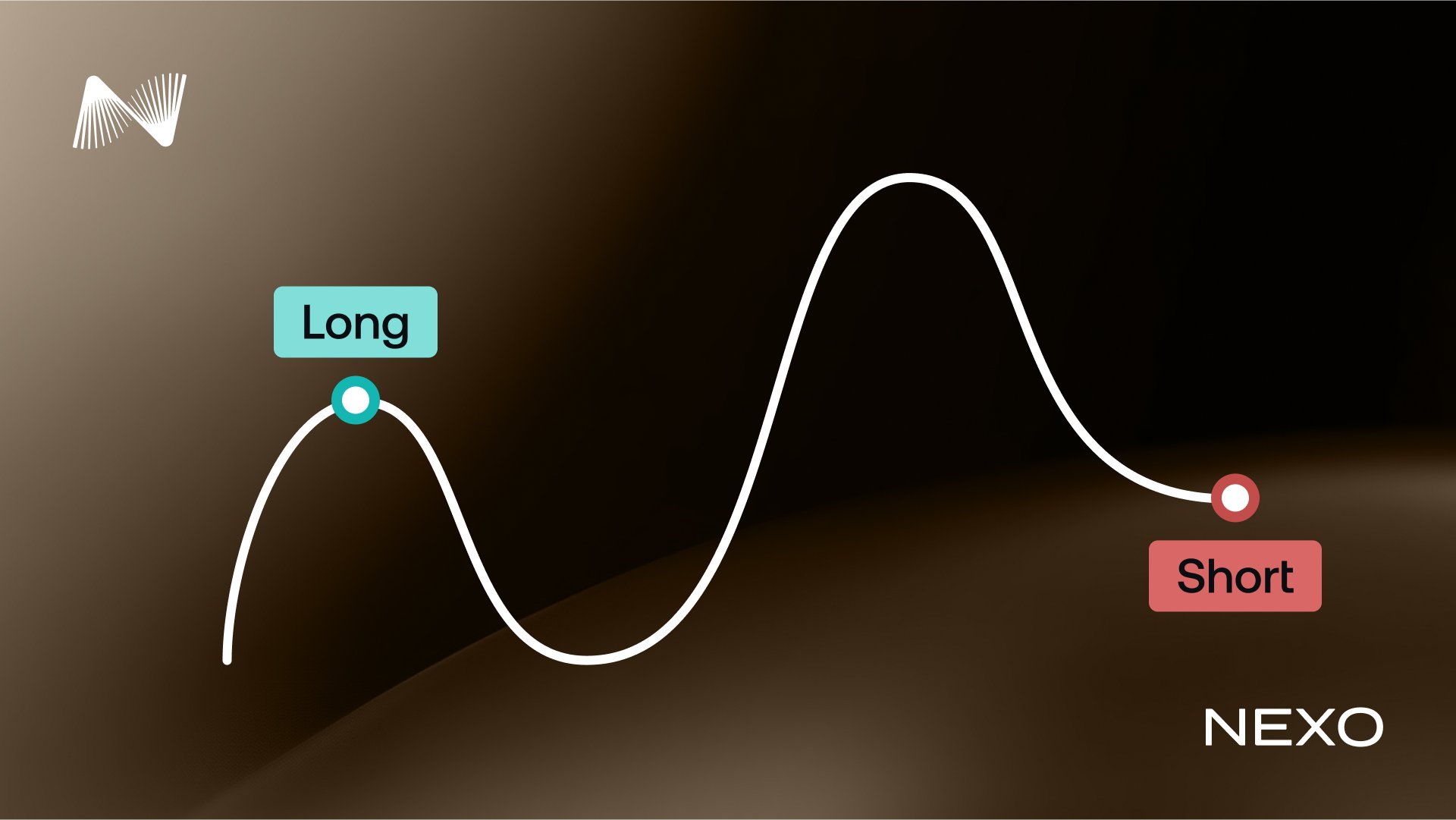Going long or short in Futures: What does it mean?
Aug 29•5 min read

Futures sound complicated, but they’re not.
At first glance, crypto futures can sound intimidating. Words like long, short, leverage, and contracts often make people think this is something only professional traders understand.
But at their core, futures are simply agreements about where the price of a cryptocurrency will go.
Instead of buying Bitcoin or Ethereum outright, you’re trading a contract that tracks their future price. That means you can try to profit from whether the market moves up or down.
In this guide, we’ll break down the basics: what crypto futures are, how they work, and what it means to go long or short.
What are crypto Futures?
They are financial contracts that let you agree to buy or sell a crypto asset at a set price on a future date.
The key point: you’re not buying the actual Bitcoin or Ethereum itself. You’re trading the contract that represents its price.
A futures contract is an agreement to trade at a set price later.
For example, if you buy a long BTC futures contract at $115,000 and later the market price rises above that, you can sell at a profit. If it drops below, you take a loss.
This is why people talk about “going long” or “going short” in futures. It’s simply choosing whether you think the price will rise or fall.
How do crypto Futures work?
Instead of owning the cryptocurrency itself, you trade contracts that follow its price. These contracts let you speculate on where the market is heading.
Here are the basics:
- Margin: To open a futures position, you put down a fraction of the trade’s value (called margin). It’s like a security deposit.
- Collateral: The assets you add to your account (like BTC, ETH, or stablecoins) to back your trading.
- Leverage: Futures often allow leverage, meaning you can control a larger position than the initial amount you put in. For example, with 5× leverage, $1,000 lets you trade as if you had $5,000.
- Expiration or Perpetual: Traditional futures expire on a set date. But most crypto platforms today, like Nexo, offer perpetual futures. These contracts don’t expire, so you can keep a position open as long as you want, unless the market suddenly goes against your position.
With crypto perpetual futures offered by Nexo, you can:
- Trade over 100 perpetual contracts, so you never need to track expiration dates.
- Use 2x up to 100x leverage, depending on the asset.
- Choose collateral such as BTC, ETH, XRP, and USDC in your Futures Wallet.
- Manage your risk with trigger orders like Take Profit and Stop Loss.
Going long vs. going short.
When people talk about going long or going short in crypto futures, they’re just describing which direction they think the price will move.
Going long → You believe the price will go up.
- Example: Bitcoin is $100,000. You go long on a futures contract because you expect it to rise. If it goes to $103,000, your contract generates profit.
- Everyday analogy: It’s like buying concert tickets early because you think demand (and prices) will rise. If you were right, you could sell them later at a higher price.
Going short → You believe the price will go down.
- Example: Bitcoin is $100,000. You go short on a futures contract because you expect it to fall. If it drops to $97,000, your contract generates profit.
- Everyday analogy: It’s like borrowing your friend’s bike to sell it today, expecting the shop to discount the same model next week. You buy it back cheaper, return the bike, and pocket the difference.
Why people trade Futures?
People use them for a few main reasons:
- Speculation → Many trade futures to try and profit from short-term price moves. Since you can go long or short, you’re not limited to betting on prices going up.
- Hedging → Investors who already own crypto sometimes use futures to protect themselves against downside. For example, if you hold Bitcoin but think the price might fall, you can open a short futures position. If the price drops, your loss on Bitcoin is offset by your gain on the short position.
- Leverage → Futures let you control a larger position with less upfront investment. This magnifies potential profits, but also magnifies losses, which makes leverage a tool to use carefully.
The risks of Futures.
Here’s what you need to know:
- Leverage cuts both ways → Just as it can multiply gains, leverage can also multiply losses.
- High volatility → Crypto markets move fast, and futures can amplify that volatility.
- No asset ownership → When you trade futures, you don’t actually own the underlying crypto — you’re trading contracts tied to its price.
- Discipline required → Futures demand constant monitoring and risk management. They’re not “set and forget” investments.
Frequently asked questions.
1. What are crypto futures?
Crypto futures are contracts that let you agree to buy or sell a cryptocurrency at a set price in the future. You’re not trading the cryptocurrency itself but contracts based on its price.
2. How do crypto futures work?
They work by letting you open positions with margin. If the market moves in the direction you thought (long or short), you make a profit. If it moves against you, you take a loss. Some futures expire, while perpetual contracts stay open until closed.
3. What does going long or short mean in crypto futures?
Going long means you expect the price to rise, while going short means you expect the price to fall.
4. Why do people use crypto futures?
To speculate on short-term price moves, hedge against risk in their portfolio, or use leverage to control larger positions with less capital.
These materials are accessible globally, and the availability of this information does not constitute access to the services described, which services may not be available in certain jurisdictions. These materials are for general information purposes only and not intended as financial, legal, tax, or investment advice, offer, solicitation, recommendation, or endorsement to use any of the Nexo Services and are not personalized, or in any way tailored to reflect particular investment objectives, financial situation or needs. Digital assets are subject to a high degree of risk, including but not limited to volatile market price dynamics, regulatory changes, and technological advancements. The past performance of digital assets is not a reliable indicator of future results. Digital assets are not money or legal tender, are not backed by the government or by a central bank, and most do not have any underlying assets, revenue stream, or other source of value. Independent judgment based on personal circumstances should be exercised, and consultation with a qualified professional is recommended before making any decision.
